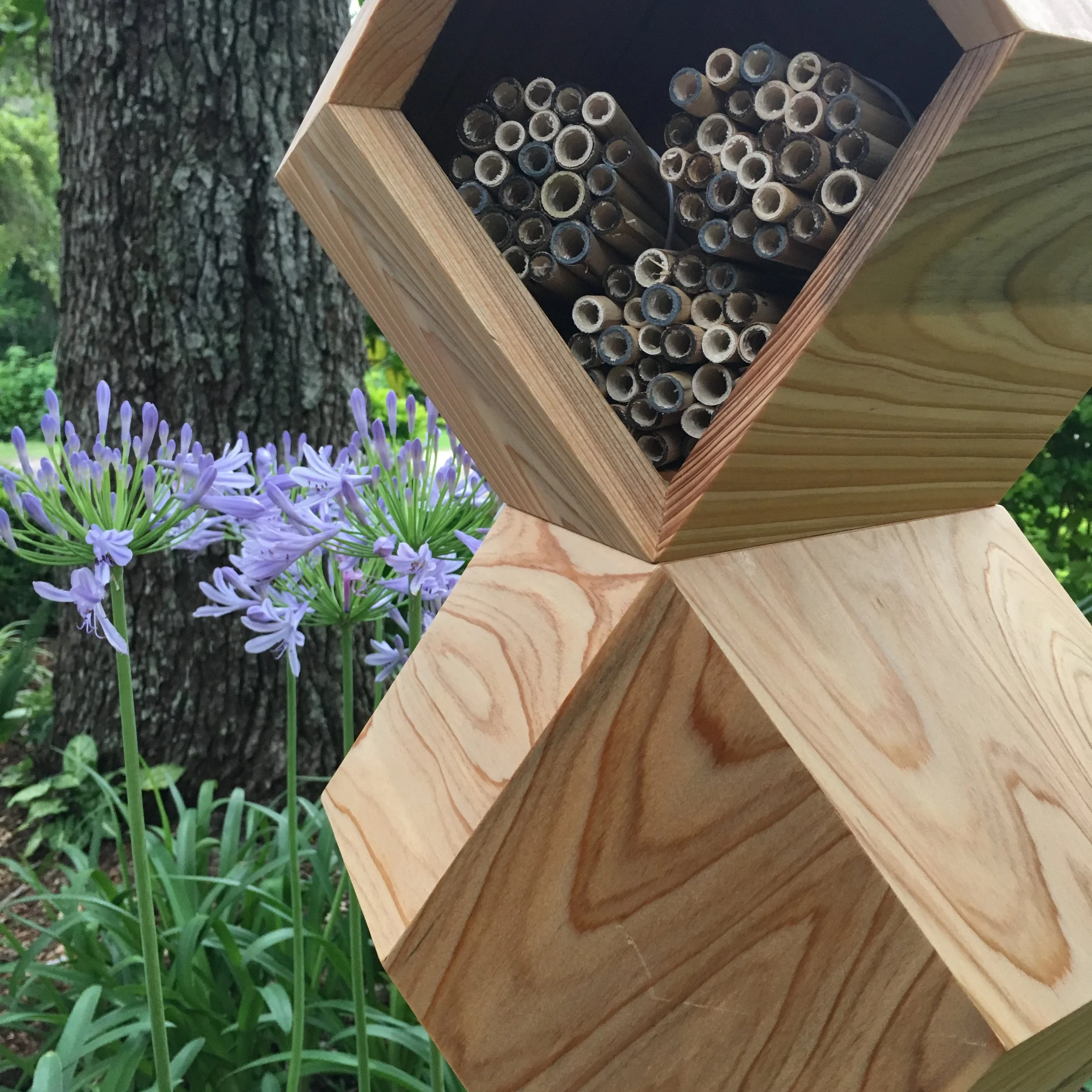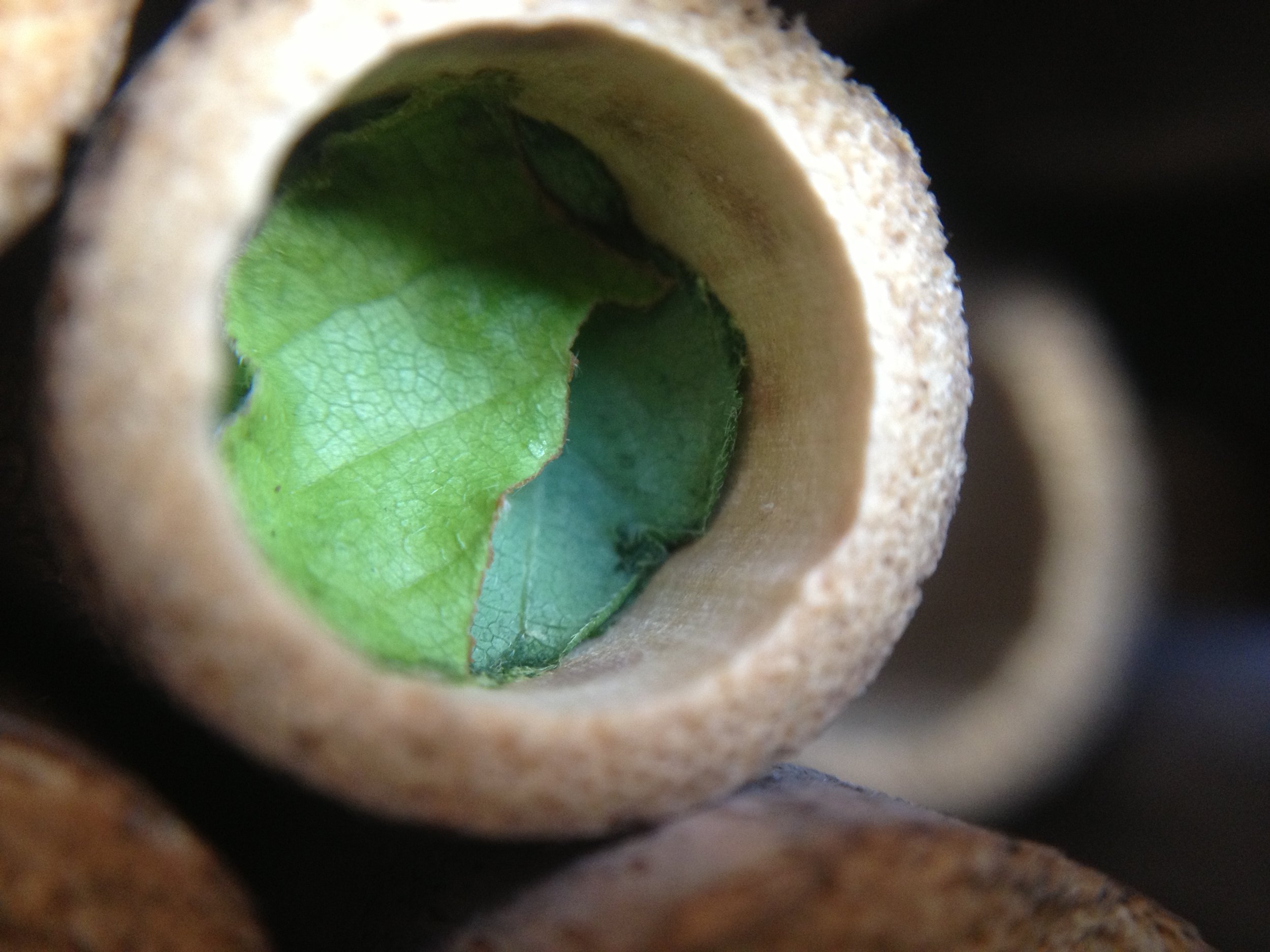Bee Manor
Commissioned artwork for the Saint Louis Science Center, St. Louis, MO (2016)
Bee Manor is a site-specific, multi-media artwork commissioned for the Grow Pavilion and Gallery at the Saint Louis Science Center. Bee Manor functions both as a sculpture and as a native bee nesting site for tunnel-dwelling insects. The form is influenced by insect architecture, consisting of three stacked rhombic-dodecahedrons. The sculptures are filled with hollow reeds and bamboo to provide nesting materials for native bees and solitary wasps. (The images show the artwork in process before being shipped off for installation.)
Bee Manor (Before Installation), Wood, metal, reeds, bamboo (2016)
Bee Manor, wood, metal
Native bee and solitary wasp nesting site in cut bamboo at
Detail, Bee Manor, wood, metal, nesting materials- reeds (2016)
Although often overlooked, an incredible variety of insect pollinator species exist. In North America alone, resides over 4,000 native bee species and over 20,000 species worldwide. The symbiotic relationship between flowering plants and their pollinators is one that has evolved closely over time. The vast majority of all plants require pollination to reproduce. In a rapidly changing environment, pollinators face complex circumstances threatening their health and habitat. A diverse landscape that blooms throughout all seasons is highly essential to these pollinators. In North America, approximately 1,200 bee species make their nests in tunnels, such as in reeds and other hollow-stemmed plants.
Leaf-cutter bee nesting in the hollow bamboo
Carpenter bee (genus Xylocopa) clinging to a flower drinking nectar
Leaf-cutter bee (genus Megachile) visiting a flower






